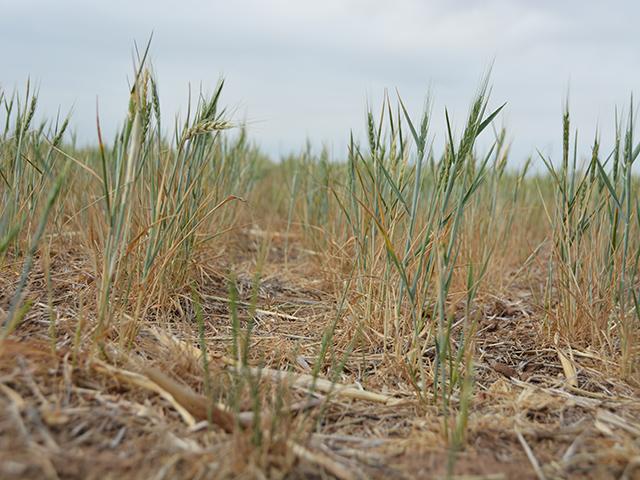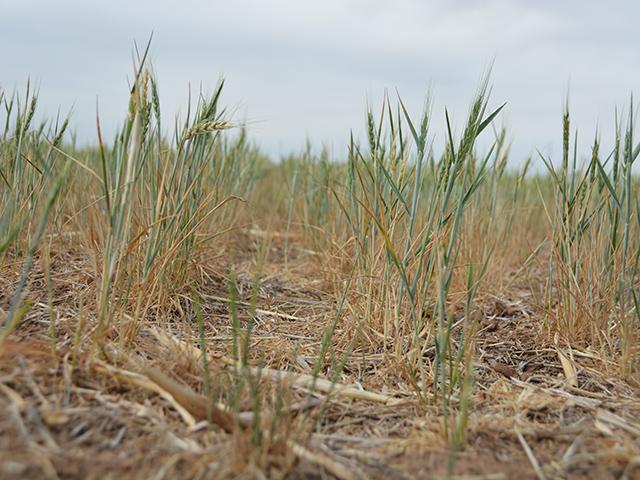Ag Policy Blog
EWG Shows Higher Crop Insurance Payouts, But Coverage Area and Liability Potential Also Rose Dramatically
NOTE: This article was updated with a clarification in the dollar figures tied to indemnities.
Crop insurance payouts keep rising over time, driven by a combination of more extreme weather events as well as more policy options and add-ons meant to help farmers cope with the combination of weather and financial risks as well.
Environmental Working Group on Wednesday issued a report highlighting that crop insurance payments reached $161.6 billion from 2001 to 2022. That's an average indemnity payment of $7.69 billion over the that 21-year stretch, though payments have spiked at times due to widespread weather events such as drought.
DTN updated the numbers following a clarification from Environmental Working Group. EWG's main report actually highlights $118.7 billion in payments over 21 years were tied to the "five most expensive weather-related cause of loss, not all payments."
The 2022 crop year had a record payout of $19.13 billion, which EWG pointed out is a giant leap from 2001 when the indemnities $2.96 billion.
As DTN's Katie Dehlinger reported Tuesday, crop insurance price guarantees at the end of October closed with lower prices, possibly triggering a payment for producers depending on their coverage levels and potential yield losses. (See below)
EWG REPORT HIGHLIGHTS
Drought and excessive moisture (flooding) account for more than 80% of all crop insurance indemnities followed by hail, heat and decline in crop prices are the biggest drivers of indemnity payments, followed by freezes.
Droughts over the past 21 years have led to nearly $56.6 billion in payments, or an average of $2.69 billion annually. Texas, Kansas, South Dakota, Iowa and Illinois were the top five states in drought payments.
P[L1] D[0x0] M[300x250] OOP[F] ADUNIT[] T[]
Excessive precipitation or flooding takes up nearly $39.8 billion. North Dakota, Minnesota, South Dakota Iowa and Illinois had the highest rain/flooding payments.
Hail comes in a distant third at just under $9.7 billion in indemnities. Texas, Nebraska, North Dakota, Kansas and Colorado were the highest states for hail payments.
Texas accounts for $15.5 billion in payments over that 21-year span, the highest of any state.
CROP INSURANCE EXPANSION
Some details not in the EWG report about the expansion of crop insurance over the past two decades can be found in the USDA Risk Management Agency's summary of business reports.
The indemnities have gone up, but so has everything else about crop insurance. In 2001, crop insurance covered 211.3 million acres with a total liability risk (value of crops covered) was $36.7 billion, according to RMA.
By 2010, acreage had gone up to 256.2 million acres and total liability covered jumped to $78 billion.
For policies sold this year -- 2023 -- crop insurance covered nearly 539.5 million acres and the total liability amounted to $181 billion.
The 2023 crop year was the first time crop insurance covered more than 500 million acres. The 2022 acreage was 493.8 million acres.
Loss ratios, which break down to indemnity divided by total premium, fluctuate over time, but RMA's goal is to keep those ratio's under 1.00. Going back to 2001, the loss ratio has topped 1.00 six times out of 21 years so far. Right now, it's hard to gauge how 2023 will fall, though RMA reports already paying out $6.39 billion.
CALLS FOR CHANGES
EWG wants to see more reforms in how premiums are calculated to factor in more extreme weather, which includes lowering the premium subsidies on higher-risk ground. The group said premiums should encourage more Whole Farm Revenue Protection policies -- and lawmakers recognize that Whole Farm Revenue is too complicated and cumbersome for most producers.
EWG also wants to see payment limits and income caps, something Congress is unlikely to change.
The full EWG report: https://www.ewg.org/…
Also see, "Harvest Crop Insurance Prices Fall Below Spring Guarantees at $4.88 for Corn, $12.84 for Soybeans,"
Chris Clayton can be reached at Chris.Clayton@dtn.com
Follow him on X, formerly known as Twitter, @ChrisClaytonDTN
(c) Copyright 2023 DTN, LLC. All rights reserved.





Comments
To comment, please Log In or Join our Community .